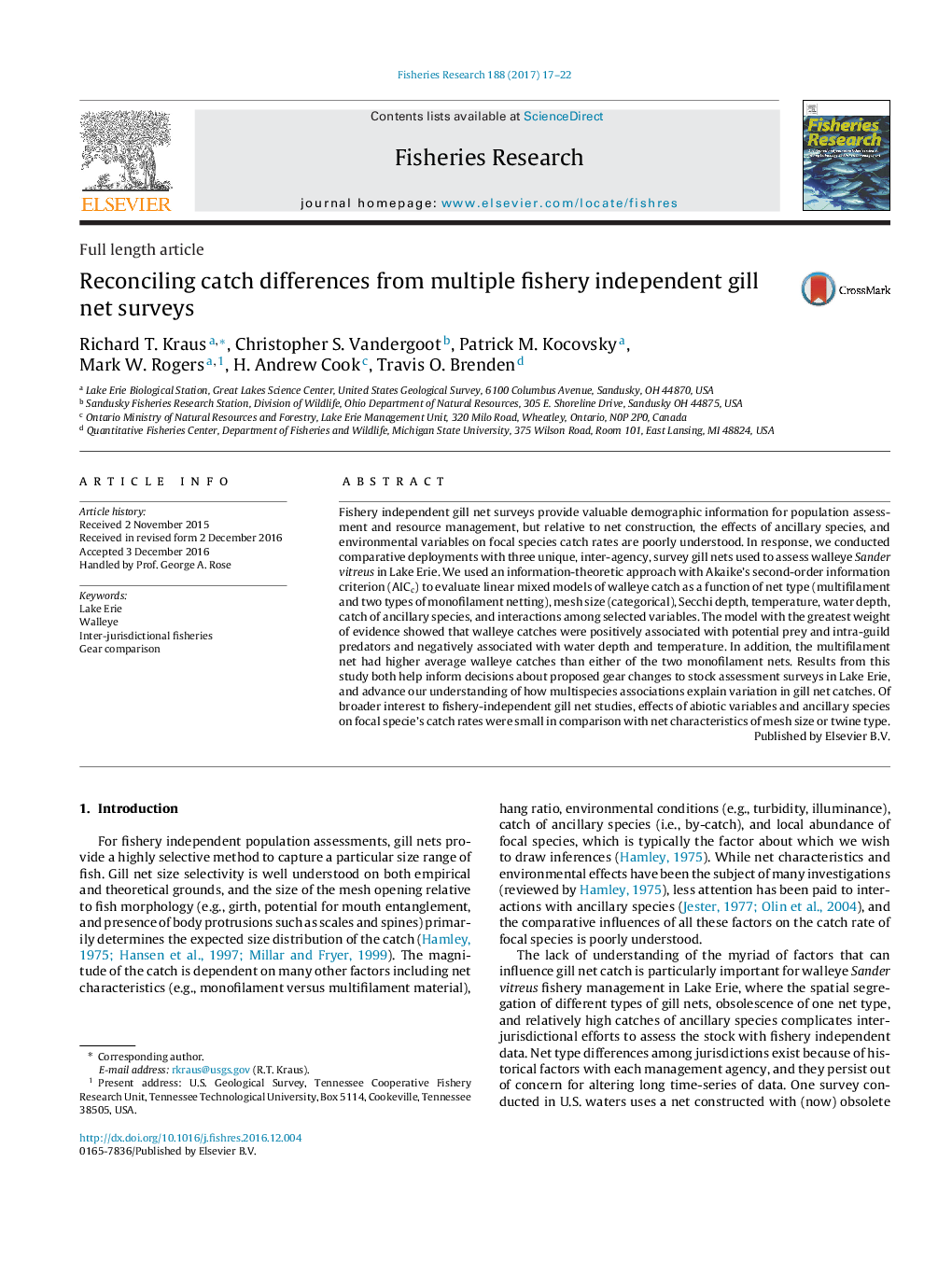| کد مقاله | کد نشریه | سال انتشار | مقاله انگلیسی | نسخه تمام متن |
|---|---|---|---|---|
| 5765589 | 1626782 | 2017 | 6 صفحه PDF | دانلود رایگان |
عنوان انگلیسی مقاله ISI
Reconciling catch differences from multiple fishery independent gill net surveys
ترجمه فارسی عنوان
جمع آوری تفاوت های گرفتن از بررسی های خالص مستقل از ماهیگیری چندگانه
دانلود مقاله + سفارش ترجمه
دانلود مقاله ISI انگلیسی
رایگان برای ایرانیان
کلمات کلیدی
موضوعات مرتبط
علوم زیستی و بیوفناوری
علوم کشاورزی و بیولوژیک
علوم آبزیان
چکیده انگلیسی
Fishery independent gill net surveys provide valuable demographic information for population assessment and resource management, but relative to net construction, the effects of ancillary species, and environmental variables on focal species catch rates are poorly understood. In response, we conducted comparative deployments with three unique, inter-agency, survey gill nets used to assess walleye Sander vitreus in Lake Erie. We used an information-theoretic approach with Akaike's second-order information criterion (AICc) to evaluate linear mixed models of walleye catch as a function of net type (multifilament and two types of monofilament netting), mesh size (categorical), Secchi depth, temperature, water depth, catch of ancillary species, and interactions among selected variables. The model with the greatest weight of evidence showed that walleye catches were positively associated with potential prey and intra-guild predators and negatively associated with water depth and temperature. In addition, the multifilament net had higher average walleye catches than either of the two monofilament nets. Results from this study both help inform decisions about proposed gear changes to stock assessment surveys in Lake Erie, and advance our understanding of how multispecies associations explain variation in gill net catches. Of broader interest to fishery-independent gill net studies, effects of abiotic variables and ancillary species on focal specie's catch rates were small in comparison with net characteristics of mesh size or twine type.
ناشر
Database: Elsevier - ScienceDirect (ساینس دایرکت)
Journal: Fisheries Research - Volume 188, April 2017, Pages 17-22
Journal: Fisheries Research - Volume 188, April 2017, Pages 17-22
نویسندگان
Richard T. Kraus, Christopher S. Vandergoot, Patrick M. Kocovsky, Mark W. Rogers, H. Andrew Cook, Travis O. Brenden,
